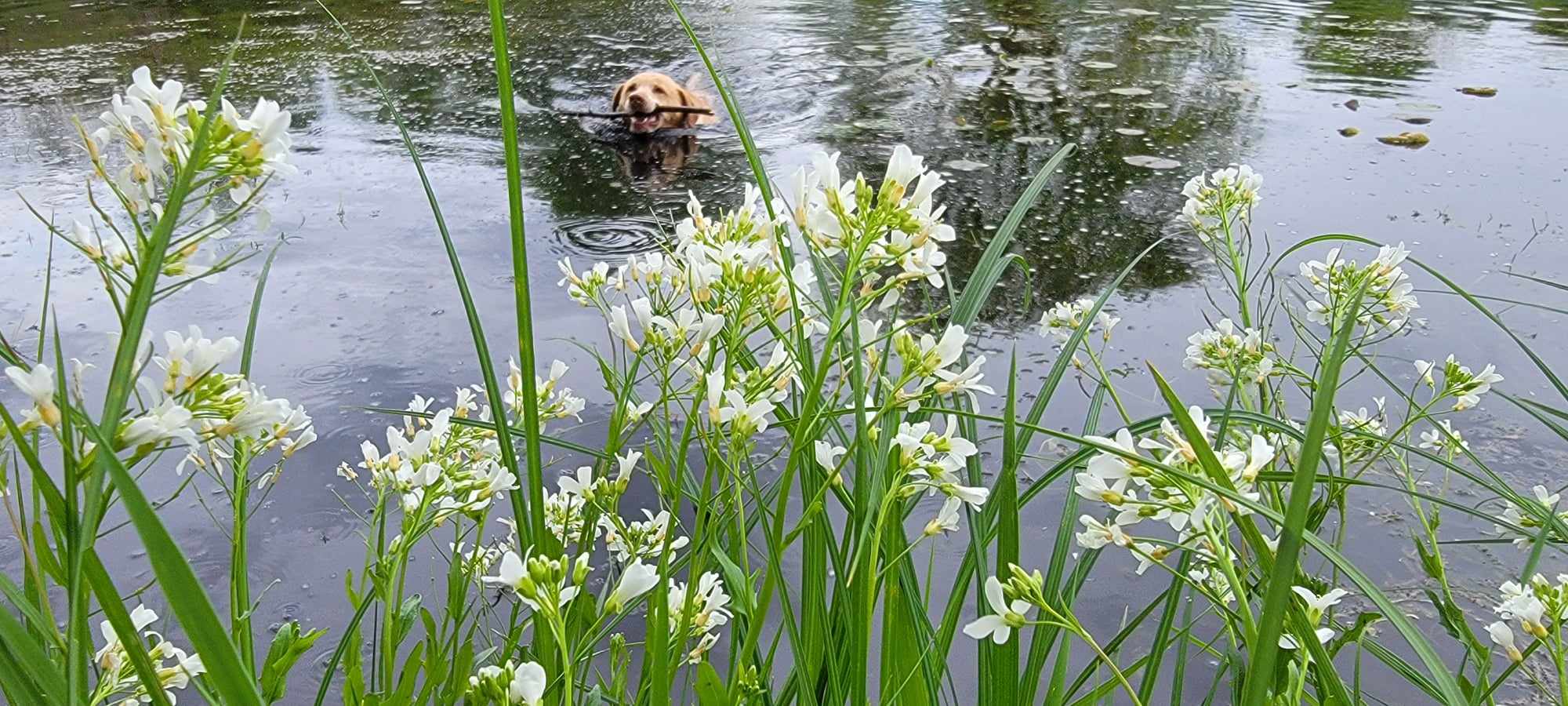Katie Byerly of Cerro Gordo County is also known as Iowa Prairie Girl on YouTube.
Several years ago I gave a presentation called “The Wildflowers of Wilkinson Park” at an assisted living. For one woman in her 90s, the images of Spring Cress (Cardamine bulbosa) stirred up fond memories. She was grinning from ear to ear and teary eyed as she reminisced, “We lived next to that area (before it was a park) and my mother would pick spring cress for our supper.”
I wonder now if she often thought about her mother and spring cress or if the images triggered a forgotten memory.

Spring cress typically blooms from April through June. At Wilkinson Park in Rock Falls, Iowa, it grows along the edges of the pond and in the other fen-like wet spots of the prairie. If you are wanting to find these plants, you will need to look along stream banks, ponds, marshes, and other wetland areas.

While marsh marigold bring the first splash of yellow to wetlands, the clean, crisp white flowers of spring cress do the same for the color white. It is ironic that the wildflower enthusiast attempting a closer look at either of these marsh loving species usually ends up wet, dirty and covered with mud (not to mention their water, swamp-loving canine companion).
Closer views of the white flowers:

Here is an image of the white four petaled flowers of spring cress. The rounded tipped flower petals are longer than their sepals making the sepals unnoticeable when the flower blooms. The six creamy colored stamens are prominent in each flower center.

Groups of flowers:


Field guides fail to mention the volume of flowers each plant produces as you can see in this picture. It feels to me that this member of the mustard family is often overlooked. Even Sylvan Runkel and Dean Roosa in their book Wildflowers and Other Plants of Iowa Wetlands describe spring cress flowers as “sufficiently inconspicuous that it is not sought as a popular spring wildflower.”
The plants are slight and slender. They can reach the height of eight inches to two feet, but I have never seen one that tall. Here is a picture of a spring cress plant in the Wilkinson Prairie next to the pond. It is about twelve inches tall.

Every leaf definition in the book can describe the leaves of this plant. The basal leaves are different than the upper leaves. Here is the wording from the Illinois Wildflower website:
There are both basal leaves and alternate leaves. The blades of the basal leaves are up to 1¼” long and 1″ across; they are oval to orbicular in shape, medium green, glabrous, and smooth or undulate along their margins. The slender petioles of the basal leaves are usually longer than the blades. The alternate leaves are produced sparingly along the central stem; they are up to 2″ long and 1″ across, medium green, and glabrous. The alternate leaves are oblong-ovate in shape and their margins are smooth, undulate, or bluntly dentate; at the base, each alternate leaf is sessile or short-petioled.
Here is an image of a lower leaf:

And here is a leaf higher up on the stem:

The seedpods of spring cress develop from each flower. They are very slim and not easy to photograph. While reaching for this article I learned the word siliques, which refers to narrow cylindrical seedpods. The Illinois Wildflower website describes the spring cress silique:
Each flower is replaced by a slender hairless silique about 1″ long that is somewhat flattened. The siliques are ascending to erect; they eventually divide into two parts to release their seeds. These seeds are ovoid, somewhat flattened, and wingless; they are arranged in a single row in each silique.


Runkel and Roosa mention that spring cress does make for good salads, although they suggest it has the hint of a horseradishy flavor. The definition of cress is “any of various plants related to the mustards and having leaves that are used especially for salads.” Pungent is another word used to describe a cress.


As for me, every time I see spring cress I imagine a 1940s mother. She is wearing a house dress and apron. Maybe she has the kids in tow, or maybe she is enjoying a moment to herself as she walks through the neighbor’s cow pasture to the pond to gather spring cress to feed her family. She is a kindred spirit noticing the marsh marigolds and greeting the green heron that flushes from the pond as she approaches. Of course, she has a dog as her companion and protector.
They are now my Wilkinson Park ghosts that I greet every spring, along with the Spring Cress flower.




1 Comment
It's great to see this flower...
Spring cress is not as well-known as some other Iowa wildflowers, but it is just as beautiful. And it’s especially nice to see a native mustard being featured, given the many non-native mustard species that are blooming in rural Iowa now. Thank you!
PrairieFan Thu 6 Jun 7:29 PM